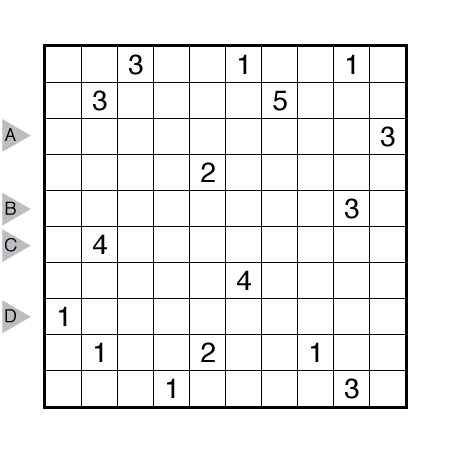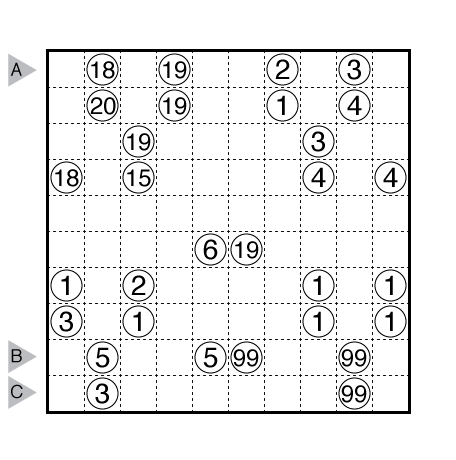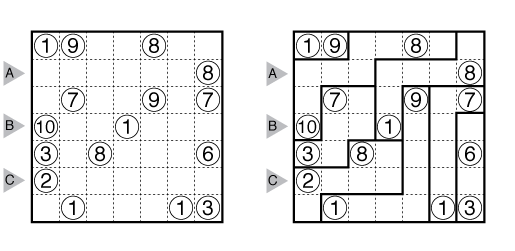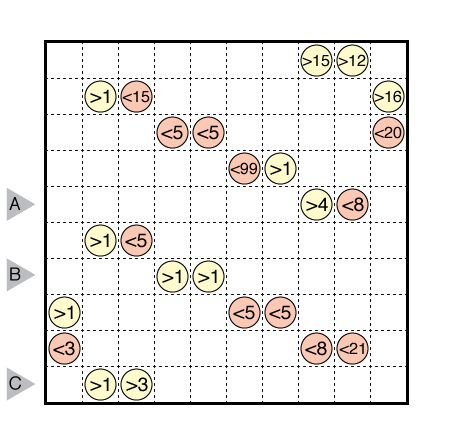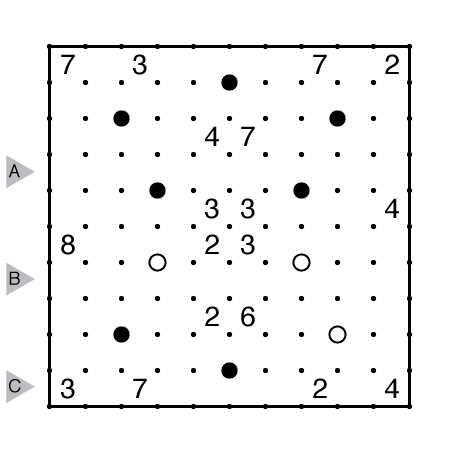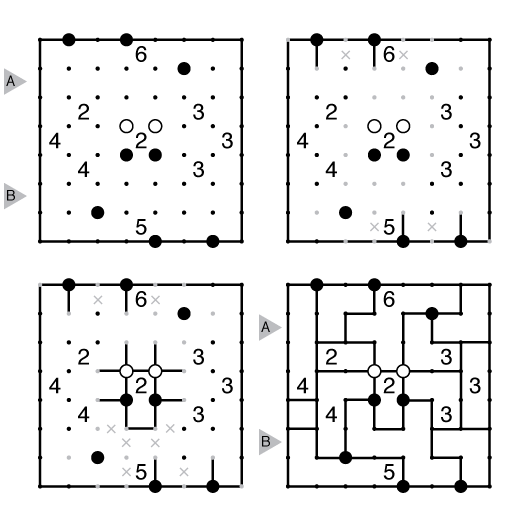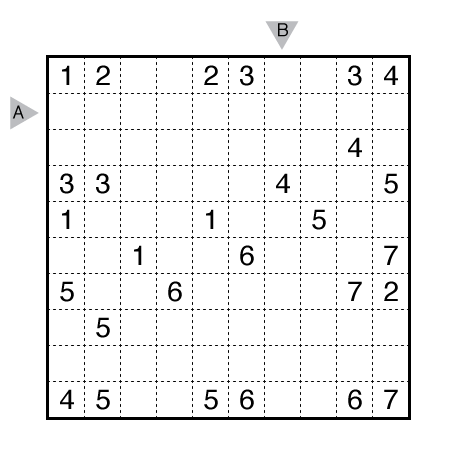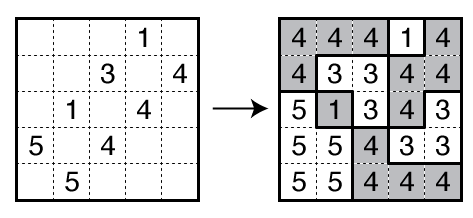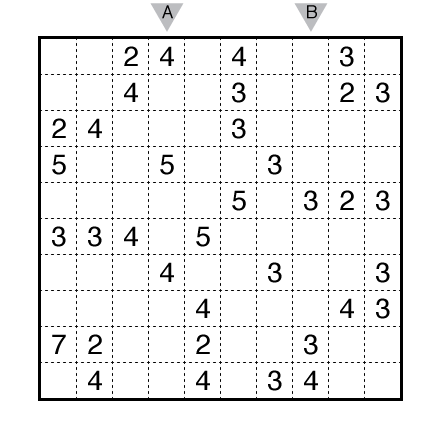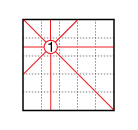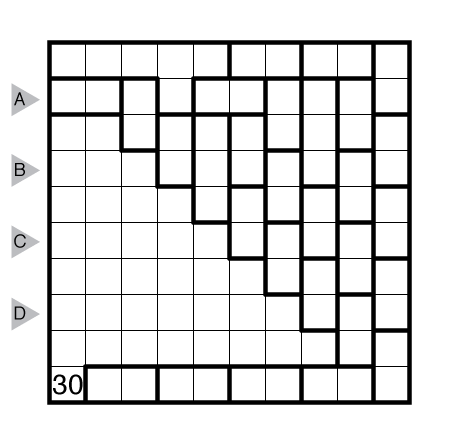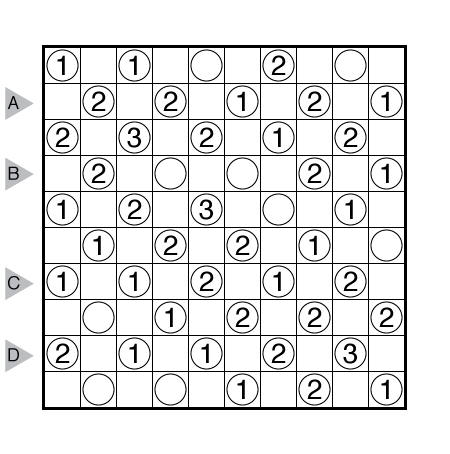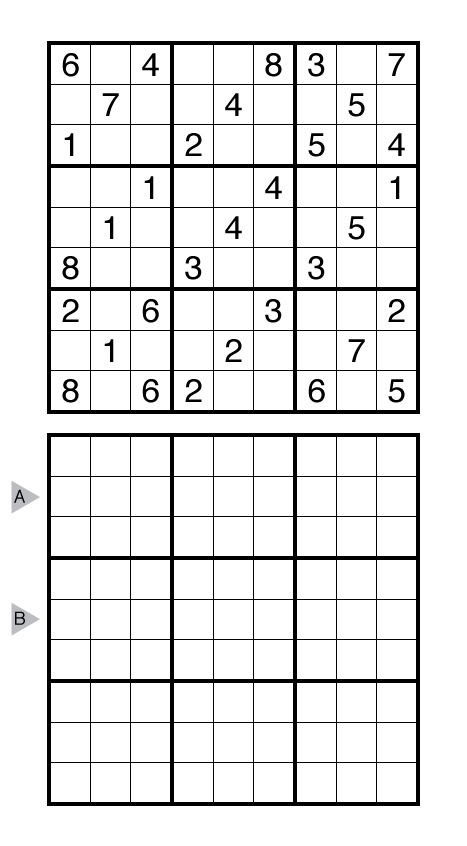Tapa-Like Loop by Prasanna Seshadri
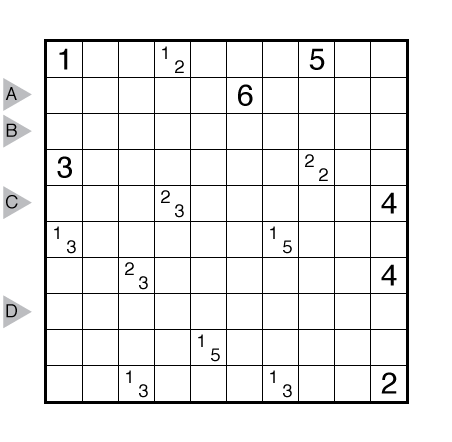
or solve online (using our beta test of Penpa-Edit tools in linex mode where left click+drag draws lines and right click marks X’s on edges)
Theme: Logical
Author/Opus: This is the 26th puzzle from our contributing puzzlemaster Prasanna Seshadri.
Rules: In this variation of Tapa, the wall is in the form of a single non-intersecting loop. Clues inside the grid represent the number of neighboring cells visited by the loop; if there is more than one number in a cell, each number should be represented with a separate loop segment. There is no 2×2 rule of Tapa in this puzzle. This example image should help:
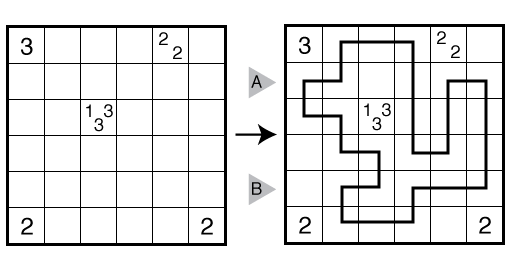
Answer String: Enter the length in cells of the horizontal loop segments from left to right in the marked rows, starting at the top. Separate each row’s entry with a comma. For the example, this would be “11,12”.
Time Standards (highlight to view): Grandmaster = 0:45, Master = 1:40, Expert = 3:20
Solution: PDF
Note: Follow this link for other Tapa-Like Loop puzzles. If you are new to this puzzle type, here are our easiest Tapa puzzles to get started on.

